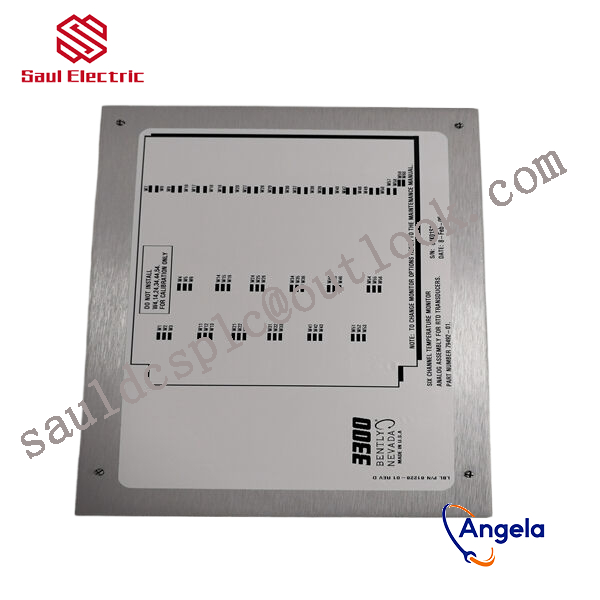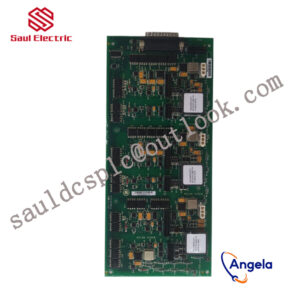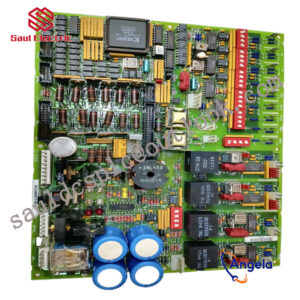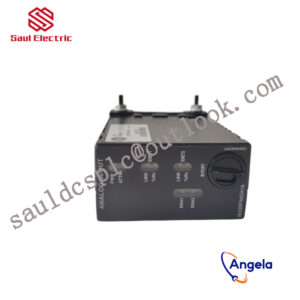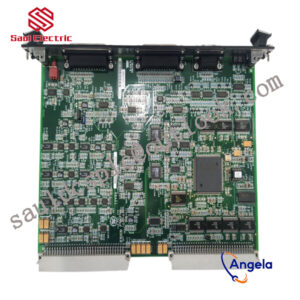Description
- BENTLY 60M100-00 gateway is designed with multi protocol compatibility and modularity, seamlessly connecting industrial systems,
- operating at a wide temperature range of -40 ° C to 85 ° C, supporting 8-channel rotating equipment monitoring,
- remote configuration to improve efficiency, and ensuring stable power and automation.
It can connect the Bently Nevada 3500 system with other control systems or host computers to achieve data interconnectivity.
thus achieving integration with other industrial control systems.
Implementation of communication between ABC industrial robot and PLC based on DeviceNet fieldbus technologyintroductionIn modern production systems, industrial robots and PLCs need to communicate and collaborate to complete production tasks. That is, the industrial robots output signals to the PLC, allowing the PLC to control related equipment to drive the robot”s front-end tools. This article mainly analyzes the communication problems between ABB industrial robots and PLC based on DeviceNet fieldbus technology. DeviceNet is a common network communication method in the field of automation. ABB industrial robots establish a network to communicate with Siemens PLC based on the DeviceNet network.1Configure DSQC652There are mainly 5 types of standard I/0 boards commonly used in ABB industrial robots [2]. Except for the different addresses assigned to them during setup, their configuration methods are basically the same. This article mainly analyzes the ABB standard I/0 board DS0C652, which mainly builds communication modules based on the DeviceNet network. The DS0C652 board has a distributed I/O module with 16 digital input and 16 digital output interfaces. The board is installed in the ABB industrial robot control cabinet. First, define the specific operation steps of the DS0C652 board, enter the teach pendant control panel, then enter the configuration menu (Figure 1), select the DeviceNetDevice menu, and add a template to enter Figure 2. ABB standard I/0 board is hung on the DeviceNet network, so the address of the module in the network must be set. The jumpers 6 to 12 of terminal x5 are used to determine the address of the module. The available address range is 10 to 63. Modify the parameters in the template parameters to complete the DS0C652 board settings. Click the drop-down menu to select the “Use value from template” row, select “DS0C65224VDCI/0Device”, and then the parameters that need to be set include the address of the I/0 board in the bus.Figure 1 Configuring DSQC6522Configure signals and parametersAfter completing the DS0C652 board setting, the I/0 signal setting will be performed. Setting the I/0 signal is the basis for establishing communication with the PLC. The PLC communicates and transmits data with the ABB industrial robot through the I/0 signal and the DS0C652 board. As shown in Figure 3, in the signal configuration interface, there are many default I/0 points after the system is established. Modification is not allowed. Click “Add” to add signals. When setting input and output signals, their address range is 0~15. First, enter the signal menu in the configuration options to set the input and output types, and modify the corresponding parameters. After completing the settings, the computer prompts that you need to restart the settings. If there are multiple signals that need to be defined and the waiting time is long after restarting multiple times, you can click “Cancel” and wait for all signals to be defined before clicking the “Yes” button to restart. After the signal settings are completed, click to select “Input and Output” in the ABB menu to check whether all signals have been set.Figure 2 Configure DSQC652 parametersFigure 3 Signal parameter settingsDuring the signal establishment process, attention should be paid to the DSoC652 port and PLC port addresses used, and the corresponding address table should be established, as shown in Table 1. The robot interacts with the PLC through I/O signals. During the setting process, there must be no errors in the port and address number of the PLC connected to the DSoC652. If the address is set incorrectly, the communication between the robot and the PLC will not work properly.The entire robot teaching pendant setting process is shown in Figure 4.
Bently Nevada125720-01Spare 4-Channel Relay Output Module
Bently Nevada 3500/34 125696-01 TMR Relay Module
125680-01 Proximitor I/O Module Bently Nevada 3500/40M
125388-01 Half-height Module Bently Nevada
136294-01 BENTLY 3500/62 I/O Module
3500/91-01-01(161204-01+161216-01)bently Communication Gateway Module
149992-01 BENTLY 3500/33 calories Relay Output Module
330850-50-00 BENTLY NEVADA preprocessor
16710-20 |Bently Nevada | interconnection cable
330103-00-13-10-02-00 | Bently Nevada | 3300 XL 8mm Proximity Probe
P3403893-0351 | BENTLY | Vibration Transmitter
IMQRS22 | Bently Nevada | Quick Response Module
330704-000-050-10- 02-05 | Bently Nevada | proximity detector
330103-00-03-10-02-05 | Bently Nevada | proximity detector
330104-00-13-10-02-05 | Bently Nevada | 3300 XL 8 mm Proximity Sensor
330780-90-05 | Bently Nevada | 3300 XL front sensor
330106-05-30-05-02-05 | Bently Nevada | 3300 XL 8mm Reverse Mount Probe
330500-00-02 | Bently Nevada | piezoelectric speed sensor
330130-085-02-05 | Bently Nevada | 3300 XL Extension Cable
330161-02-85-05-94-01-02 | Bently Nevada | Single triaxial high voltage feedthrough of 3300 system
133292-01 | Bently Nevada | Low Voltage DC Power Module
3500/15-07-00-00 | Bently Nevada | 3500/15 Power Module
176449-08 | Bently Nevada | Rod position monitor
128229-01 | Bently Nevada | Seismic I/O Module
3500/15-02-02-01 | Bently Nevada | power module
1900-65A-01-01-01-01-01 | Bently Nevada | Universal Device Monitor
1900/65A-01-01-03-00-00 | Bently Nevada | Universal Device Monitor
21504-00-28-10-02 | Bently Nevada | 5mm / 8mm series proximity sensor system
990-05-50-01-00 | Bently Nevada | Two-Wire Vibration Transmitte
24765-01-01 | Bently Nevada | Shell Expansion Sensor Assembly
3300/03-01-01 | Bently Nevada | 3300/03 System Monitor
3300/14-02-20-00 | Bently Nevada | Dual Thrust Position Monitor
3300/14-02-20-00 | Bently Nevada | DC power supply
3500/42M 176449-02 | BENTLY | 3500/42M 176449-02 Preprocessor/seismic monitor
9200-06-01-10-00 speed sensor bently
106M1079-01 BENTLY | Redundant power modules
3500/93-03-01-00-00 | Analog module | BENTLY NEVADA
3500/93-02-02-02-00 | Pulse input submodule | BENTLY NEVADA
3500/93-01-00-00-00 | DCS spare parts | BENTLY NEVADA
3500/92-04-01-00 | DCS system module | BENTLY NEVADA
3500/92-01-01 | Communication gateway module | BENTLY NEVADA
3500/63-01-00 | Monitoring module | BENTLY NEVADA
3500/61(163179-02) | Power connection board | BENTLY NEVADA
3500/61(133819-02) | Temperature monitor | BENTLY NEVADA
3500/53-01-00 | Overspeed protection module | BENTLY NEVADA
3500/50-04-00 |Adapter module | BENTLY NEVADA
3500/50-01-01-00-00 | Programmable control module |BENTLY NEVADA
3500/50-01-00-01 |Digital input module l position module | BENTLY NEVADA
3500/50-01-00 | Speed module |BENTLY NEVADA
3500/45-01-00 |Expansion/axial position module | BENTLY NEVADA
3500/42-01-00 | Vibration module |BENTLY NEVADA
3500/33-01-00 |Key phase module | BENTLY NEVADA
3500/32-01-00 | Relay module |BENTLY NEVADA
3500/25-01-03-00 |Relay module | BENTLY NEVADA
3500/25-01-01-00 |Key phase module | BENTLY NEVADA
3500/22-01-01-00 | Control system module |BENTLY NEVADA

